As a dog owner, it can be tempting to share your food with your beloved pup, and you may have found yourself asking, “Can dogs eat jelly?”
Well, I’ve done some research on the subject to find you the answers you need.
As a general rule, dogs need sugar as part of their diets. However, certain sugars, like those found in jellies, are harmful to dogs and shouldn’t be fed to them. Jelly contains xylitol, an artificial sweetener that is known to be toxic to dogs, even in small quantities.
Xylitol is a class of sweetener known as sugar alcohol. This sweetener is a sugar substitute in “sugar-free” jellies and other candies.
Additionally, too much sugar can even lead to diabetes; something dogs are quite prone to.
In this article, I look at the most popular types of jelly, along with several other foods, to see if they’re suitable for dogs to eat.
Hopefully, this will give you the information you need.
1. Can Dogs Have Grape Jelly?
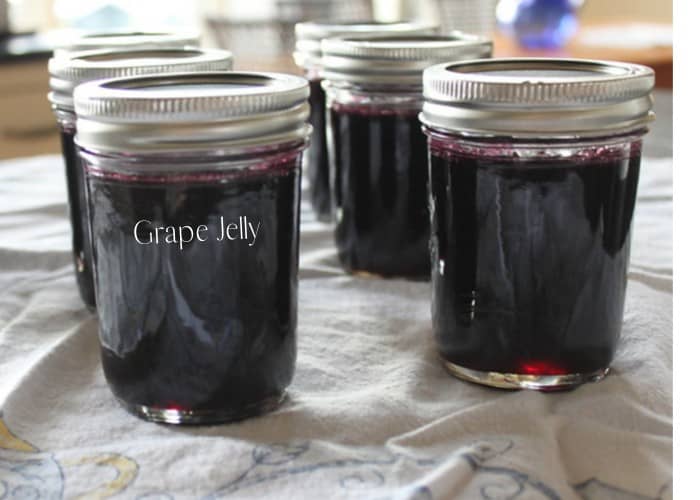
As most (if not all) dog owners will know, dogs will eat literally anything put in front of them.
Sometimes, it doesn’t even have to be put in front of them either! Unlike humans, dogs are less aware if something is bad for them, particularly if it smells tasty.
Jelly is a perfect example of this. Its main ingredient is sugar, meaning it smells very inviting to a dog.
However, as I mentioned above, the sugar levels in jelly are far too high for your dog. A teaspoon of jelly for us is almost nothing, but for a dog, it’s much more.
That said, grape jelly is a double no for dogs because of its other main ingredient: grapes.
It’s been known for a long time that grapes are toxic to dogs, and too many can lead to kidney failure.
While it’s likely that grape jelly is mostly synthetic, it definitely isn’t worth taking the risk with your dog.
2. Can Dogs Eat Strawberry Jelly?
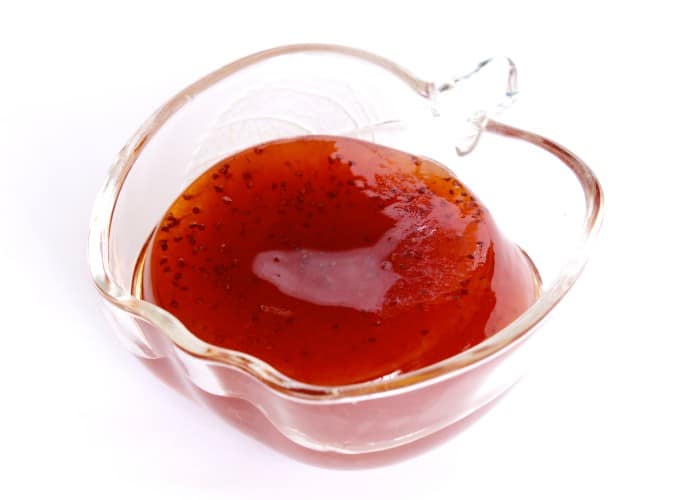
Strawberries in themselves aren’t toxic to dogs and make quite a healthy treat for them if appropriately prepared.
However, strawberry jelly isn’t an example of them prepared healthily, and so you should avoid feeding it to your dog.
The sugar used in jelly is made up of simple sugars, like glucose, along with the fructose from the fruit.
These aren’t things typically found in a dog’s diet, which should consist mainly of protein with a little carbohydrate.
The other surprising danger when it comes to any kind of jelly is the pectin. This is one of the most important ingredients in jelly and is what causes it to set.
Essentially, it’s a fiber found in many kinds of fruit, which is why some make much better jelly than others.
However, pectin is also an ingredient used to treat diarrhea, especially in dogs. It works to firm their stool by absorbing excess water in their gut.
Therefore, if they eat too much jelly, they can end up with constipation, which can be potentially very harmful if left untreated.
This is one of the lesser-known dangers of jelly and is yet another reason why you should avoid it.
You can get away with feeding your dog the occasional sweetened food (such as peanut butter), but avoid things high in simple sugars, like jelly.
Even a small amount could trigger an insulin surge, which could be potentially very harmful. As I said before, a small amount of jelly for you is a much larger amount for your dog.
3. Can Dogs Have Raspberry Jelly?
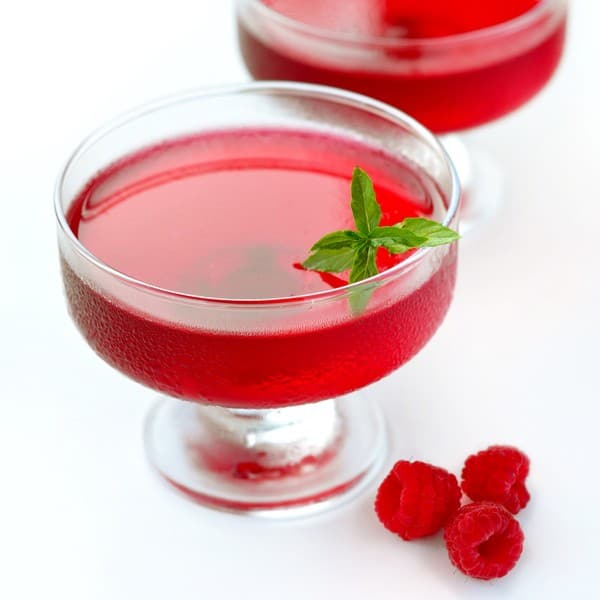
Much like with strawberries, raspberries are safe for dogs to eat, but only in moderation.
However, you should still avoid feeding them any type of jelly because it simply doesn’t deliver the right kind of nutrition that a dog needs.
Fruits like raspberries contain antioxidants, which are as beneficial for dogs as they are for us.
However, to take advantage of this, they need to be eaten in the least processed way possible (so not in jelly).
I’ve said it a few times already, but it bears repeating: the sugar levels in jelly are just too high for your dog.
Excessive consumption of sugary human food is one of the quickest ways for a dog to develop diabetes, which is something we should avoid if possible.
4. Can Dogs Eat Jello?
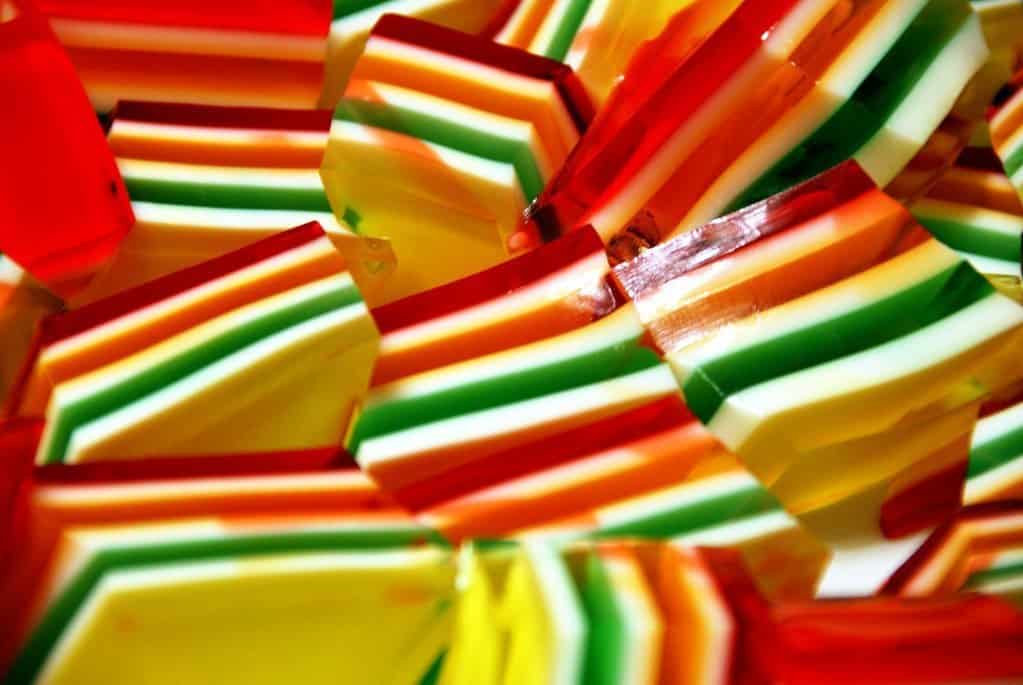
Jello is another thing that you might be tempted to feed your dog. After all, they’ll appear whatever you happen to be eating.
So, can dogs eat jello?
The short answer is yes, in tiny amounts, but I’ll explain in more detail below.
Essentially there’s nothing toxic for dogs in jello.
However, much like with jelly, it’s very high in sugar and contains no good nutritional benefits for dogs (or for you for that matter).
What’s more, most jello producers are switching to low-sugar versions, which means they’re full of chemicals and sweeteners.
The one to watch out for is xylitol, (the sugar substitute we mentioned in this article) which is known to be harmful to your furry friend’s health.
However, if you were to make your jello at home using plain gelatin and some broth (chicken, for example), you could feed that to your dog but only use it for treats.
5. Jelly Tots
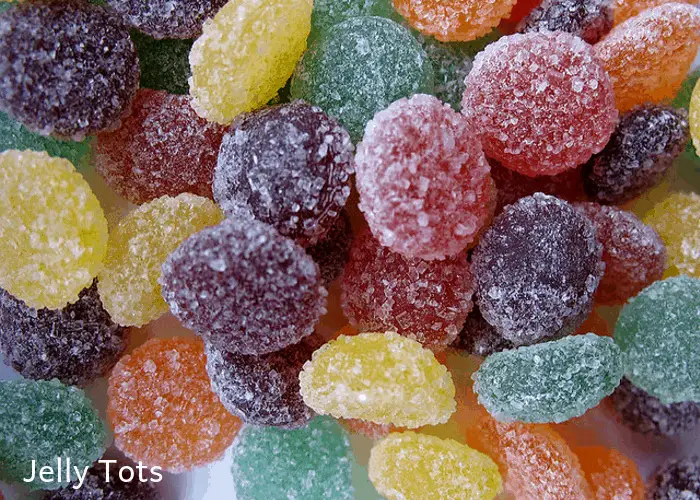
Jelly tots have long been a popular sweet treat and are known for their chewy and fruity goodness.
But can your dog eat jelly tots?
Again, the answer is no, but I’ll explain why in more detail.
That said, it should be pretty obvious by now.
Jelly tots again contain high levels of sugar. This in itself is reason enough not to feed them to your dog, aside from any other potentially harmful ingredients found in jelly tots.
After all, it’s not very often that you find jelly tots that aren’t full of chemical flavorings and colors.
The main rule should be that if a food is high in sugar, then it’s not worth feeding to your dog.
A dog’s diet doesn’t typically contain sources of sugar, and while these will be there, they’ll be sources of more complex sugars that are useful for producing energy.
Simple sugars, like those found in jelly tots, are of no use to a dog. They’ll cause a spike in insulin, which can be very harmful to dogs because their bodies are much smaller and so are more sensitive to even small spikes in chemicals.
The safest thing you can do is to avoid any source of simple sugar in your dog’s diet.
6. Can Dogs Eat Peanut Butter And Jelly Sandwiches?
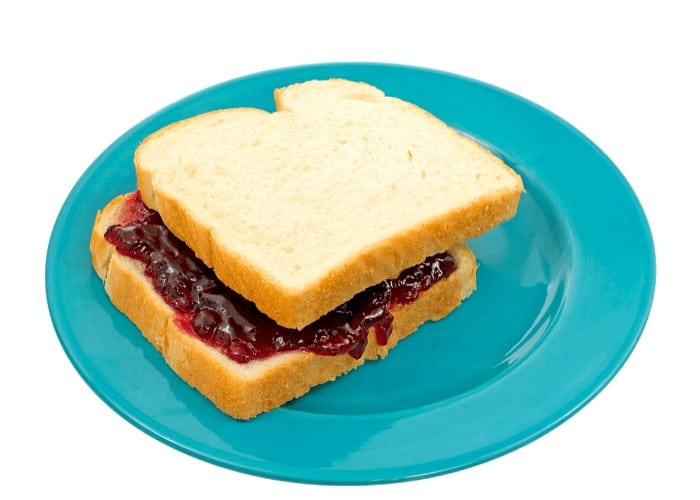 Peanut butter and jelly sandwiches are seen as one of the most recognizable comfort foods.
Peanut butter and jelly sandwiches are seen as one of the most recognizable comfort foods.
But is this something you can share with your dog?
Can dogs eat peanut butter and jelly sandwiches?
There’s nothing toxic (usually) for dogs in peanut butter and jelly sandwiches.
In fact, peanut butter is widely used as a treat for dogs because it’s high in protein, and if you get a good brand, it can be very low in sugar.
Bread, again, isn’t toxic for dogs but doesn’t really provide any nutritional benefit for them.
Dogs don’t need a lot of carbs in their diet, which should mainly be protein. So while they can eat bread, it’s too processed for them to get anything worthwhile from it.
Jelly, as we know, isn’t the best thing for dogs to eat. Along with the bread and peanut butter, it’s basically just a mountain of sugar that won’t give your dog any useful nutrition.
However, dogs can eat peanut butter and jelly sandwiches, as long as it’s only a small amount very occasionally.
Again, the most important thing to look out for is xylitol, which is an artificial sweetener.
It’s appearing more in peanut butter, and might also be found in some diet jellies.
This is very toxic for dogs, so make sure you read the ingredients properly before giving your dog even a small amount of your sandwich.
7. Can Dogs Eat Jelly Beans?
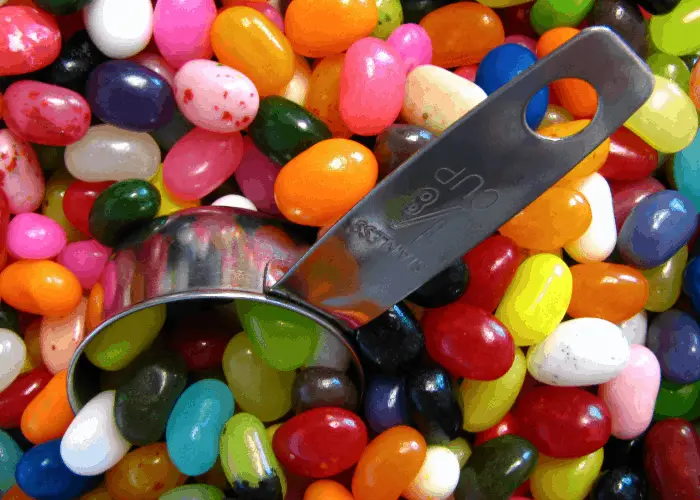
Finally, can dogs eat jelly beans?
Much like with regular jelly, jelly beans are a definite no for feeding to your dog.
Along with high levels of sugar, jelly beans also contain several ingredients that aren’t helpful to your dog like artificial flavors and colors.
But, there is a pack of “sugar-free” jelly beans?
Yes, there is.
But there goes the main offender- xylitol, again.
This sweetener a.k.a “sugar alcohol” is always present in sugar-free jelly beans (see image below)
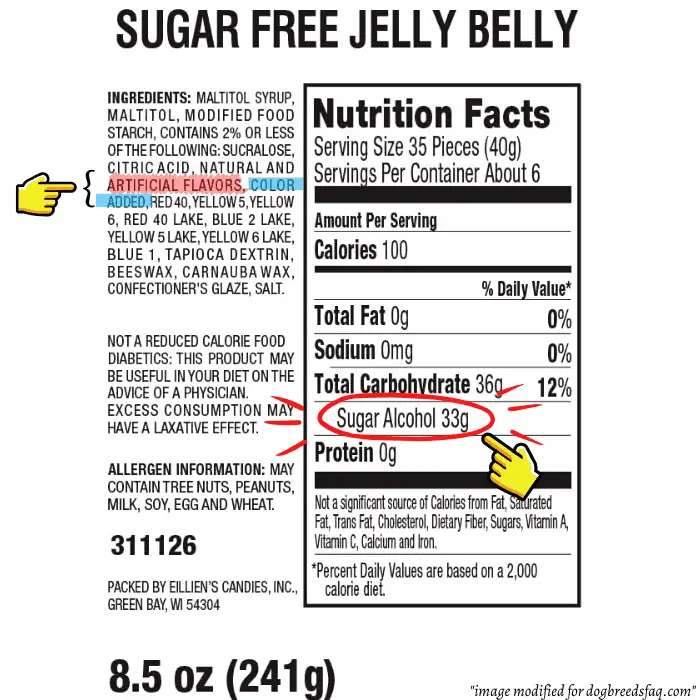
Even if the brand of jelly beans you buy doesn’t contain this, it’ll mean they contain just sugar instead, which is just as bad in its way.
Also, some brands of jelly bean contain caffeine, which we all know is a stimulant.
Caffeine in high doses, can negatively impact animals of varying sizes such as frogs, parrots and dogs.
The effects of caffeine on these animals can induce an increased heart rate, as well as damage of the animal’s liver, kidney and brain neurons.
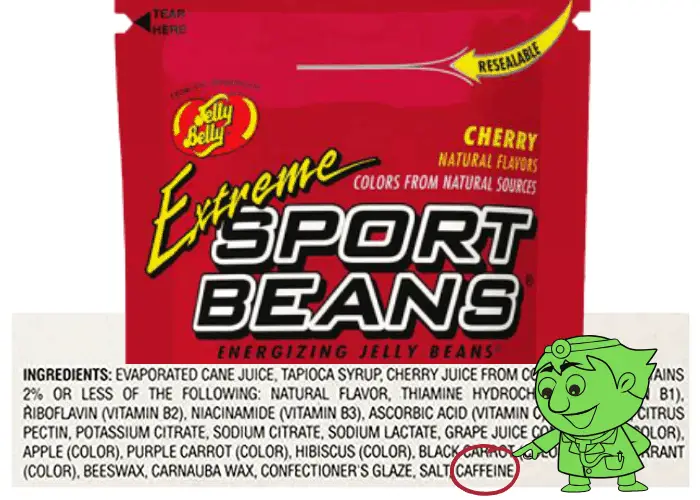
Much like what I explained about sugar toxicity above, the real danger here is that it takes much less caffeine to push a dog over the edge, simply because they’re smaller.
In short, there’s nothing beneficial to dogs in jelly beans, so it’s best to just avoid them.
Conclusion:
So, Is jelly bad for dogs?
As you can see, things that are high in sugar, such as jelly and jello, really aren’t foods to give your dog.
While they’re not necessarily toxic, the high sugar levels can trigger insulin spikes and lead to diabetes.
Also, the presence of xylitol in many jelly products nowadays can have devastating effects on your pet.
You’re best off just not bothering, and if you feel guilty about not treating your dog, make some low sugar dog treats at home using fruit.
Your dog will love them just as much, and they’ll actually get something from them!
You’ll find more Dog Nutrition Questions in the links below:

